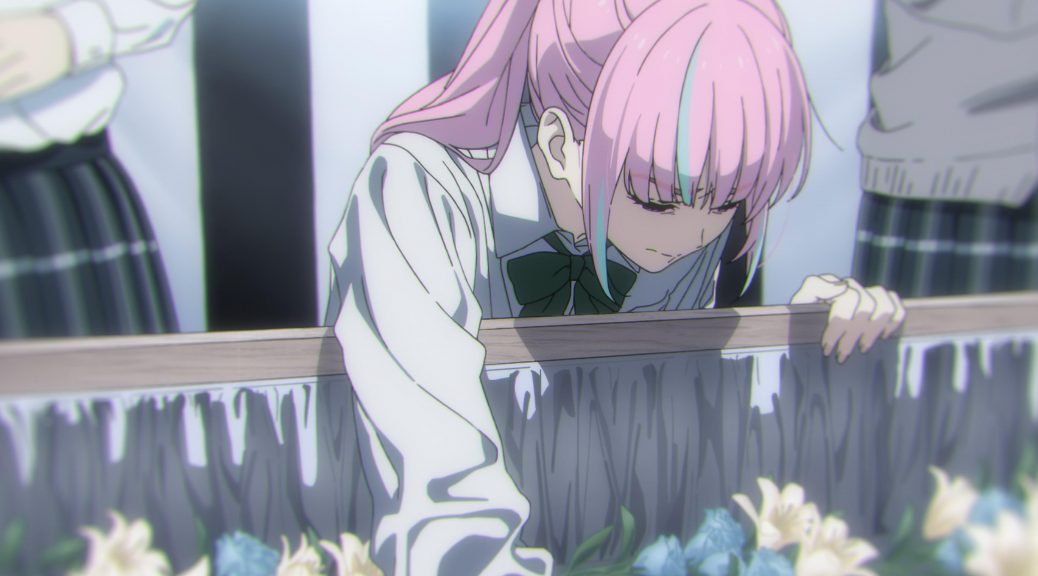
TV Anime, A Deadly Landscape Even For High Profile Productions: SK8 And Wonder Egg Priority’s Struggles
SK8 The Infinity and Wonder Egg Priority are two original passion projects, both also being high-profile productions that have been in the works for a long time. Despite being exactly what anime needs on paper, they have crashed to the point where only extreme crunch might allow them to make it to the goal by the intended date. Understanding their distinct issues will help you grasp the nuance of TV anime’s structural problems.
We point towards a lack of time as the reason why TV anime productions crash left and right nowadays. That is objectively true, but much like saying most deaths are preceded by a cardiac arrest, it lacks some necessary information if you want to truly understand the causes; as it turns out, the pathologies and accidents behind each case can be pretty different, and we can’t even begin to think how to address them if everything gets vaguely grouped together. The problem is structural, and so will need to be its solution, but we’re lost if we can’t even figure out the distinct ways it manifests itself.
But why now, and why using those two titles as a jumping-off point? After all, TV projects falling apart are sadly common, and that does include high-profile ones as well. Right now we have arguably three global phenomena in a complete state of disarray in Attack on Titan, Re:Zero, and The Promised Neverland. The first one was a ticking bomb the moment that it got accepted by MAPPA with frankly impossible deadlines, Re:Zero has begun to show wider cracks in its production after an extremely impressive fight against the odds by a depleted studio, and Neverland… let’s just say that they spent so much time making questionable choices during pre-production that it was doomed since the start too. Chances are that all of them will make it to the end without extra delays, but that will have already required inhuman amounts of work and led to more than apparent hits to the quality of everyone’s output.
In contrast to those, SK8 and WEP feel like particularly illustrative examples of how insidious this industry’s problems actually are. And the reason is simple: on paper, they did everything right! We’re talking about two wildly unique original titles that its creators are very invested on, so regardless of how you feel about them—I love them—it’s hard to question their genuine drive. Concessions are always made when it comes to commercial products, but these are by no means cynical efforts that committees funded just to move around some cash and studios accepted to keep the flow of contracts going.
And at least in theory, these two titles also approached their production process in a reasonable fashion, allocating time to both the animation process and pre-production. Rushing the former even in cases where the time given to the animation process has become common at studios like MAPPA, leading to impressive looking movement for as long as the schedule doesn’t catch up to them, but aesthetics lacking any sort of cohesion and sense of identity. As you should be able to attest if you’ve been following SK8 and WEP, though, they’ve done a perfectly adequate job at conceptualizing worlds of their own.
That takes us to one of the first major pieces of information that gets lost when we oversimplify TV anime’s problem to be just about time. While asphyxiating schedules are behind every broken TV production, and truly brilliant works are often supported by smoother conditions, the truth is that some teams essentially specialize in materializing gold out of nowhere… and others couldn’t pull it off even with deadlines a decade away. That’s obviously not criticism of the individuals, but rather something that underlines the importance of specialists—something that anime runs very low on in many fields, especially with the ludicrous levels of overproduction we’ve seen for over a decade.
If you want your work to feel authentic conceptually and its execution to have a strong flavor, chances are that you’re going to have to go out of your way to rely on those specialists. Anime attracts key animators under the promise of giving them free rein over their shots, but even with the adaptability and skill many of them have, there’s simply no beating the craft of someone who’s dedicated their career to the depiction of effects, mechanical structures, bears, lunch boxes, and the act of undressing; yes, all of those are official, specific credits out there. This is where the production budget becomes a deciding factor as well, especially with roles that will involve the entirety of the production. While there will never be an exact correlation between money spent and quality of the animation as many fans still believe, going out of your way to contact those specialists to help you shape the entire setting of the work is costlier than handling it yourself, which leads to the scope of the work being determined by whether (or to which degree) you can do that.
While that’s a problem behind many TV anime feeling off for reasons that are hard to pinpoint, if we go back to SK8 and WEP, you’ll find that they’ve done an excellent job at gathering the right people for the job too. In WEP’s case, I’ve written at length about the very deliberate cherrypicking of acting specialists that allows them to strike a natural balance between authenticity and eye-catching exaggeration that’s perfect for the work, and the design choices for its fantastical elements that are similarly on-point. Similarly, Hiroko Utsumi has managed to balance a mix of her ex-coworkers delicacy with the skating madness that only uniquely intense animators like Takahiro Kagami can nail. And again, this is all supported by a lot of care being put into the setting and the specific subject matter.
These two titles did their homework right, avoiding all the early pitfalls that doom most TV anime and setting themselves up for great success in the process. From a purely creative standpoint, and if I pretend that these projects don’t exist further than the product that we can see on our screens, I’d say that they did succeed. The quality of their execution has taken a hit for sure, but it’s one that will go unnoticed by most untrained eyes, and thus hardly anything extraordinary when it comes to anime. And yet, here we are, with recap episodes for the both of them just to have an instant to breathe, and chilling comments by its creators all over social media that illuminate exactly how bad things are.
If you’re wondering how two major titles that did—and continue to do—so much right have led to anime creators used to nightmarish conditions saying that this is some of the most stressful work they’ve ever had to do, don’t feel too bad; we’ve got a Discord full of people attuned to this industry’s nonsense and keeping an eye on its developments, and a whole bunch of them still struggled to come to terms with exactly how screwed their situation is. I know I did myself!
Let’s start with SK8, then. If we were to oversimplify, its core issue would be summed up with “the team was way too small for the amount of work remaining, which is causing BONES to smash the panic button harder than they’ve had to do in a very long time”; but since this whole piece is about explaining the nuances that often get lost when describing the industry’s problems, let’s go a bit more in-depth. Yes, SK8’s staff rotation is indeed quite short. Credits never tell the full story, but they’re also not hiding the fact that the same group of people is handling the animation supervision in every single episode, and that even directorial duties constantly fall in the hands of the same folk like Takahiro Hasui.
This is even noticeable on a key animationKey Animation (原画, genga): These artists draw the pivotal moments within the animation, basically defining the motion without actually completing the cut. The anime industry is known for allowing these individual artists lots of room to express their own style. level, as people like Naoki Okada and Hidenori Fukuoka have worked on every single episode so far. The latter is particularly notable, as not only has his animation remained impressive despite the ridiculous workload, but it also attached to a cute story. Being from Osaka, he was personally acquainted with KyoAniDo people like Utsumi… and yet was unable to work with them due to the studio’s unique circumstances, so nowadays he’s making good use of these opportunities.
If that sounds endearing and you’ve started to question whether working with a small team is even that bad of an option, you’re on the right track. If anything, it’s tightly-knit small teams that are more conducive to creative and practical success, for reasons that should be easy to understand if you’ve ever worked in a team. This industry struggles a lot with efficiency, partly because of its reluctance to move away from nonsense practices that have become tradition, and partly because there’s simply no managing a metric ton of titles a year in a sensible way. Gather the right small team, though, and it might be easier to keep everyone on the same page from an artistic standpoint, while keeping the studio dynamics easier to manage too. A great route to take, as long as you can handle the workload.
It’s those last words that will haunt the people who called the shots for SK8. For once, I don’t intend to put much of the blame on them. It’s very likely that given the time SK8’s production process was allocated, it would have finished just fine under normal circumstances. But as it turns out, 2020 wasn’t really normal circumstances, as the pandemic made that much-desired efficiency take a massive nosedive. Though it’s true that they could have reacted faster, this is the kind of problem that snowballs faster than you realize, and all time isn’t created equal anyway: as much as it would help, a delay for an already ongoing project is never a real solution.
The major lesson to draw from something like this isn’t that pandemics are kind of bad, which I hope is something that everyone’s aware of, but rather how unprepared the anime industry is for accidents. Now this as big of a calamity as they can possibly face, but even much smaller mishaps have thrown plenty of productions completely off the rails. Studios simply have very little room to pivot, which is no small issue when you consider how often things refuse to go as intended. BONES is an animation powerhouse very few can compare to, and even they will barely avoid death by having people from their other substudios join in a rush. Had it been another studio, we wouldn’t even be seeing SK8’s final episodes anytime soon—and that still wouldn’t mean that they’d get to make the finale at their leisure.
Compared to SK8’s accidental catastrophe, WEP’s situation is even more problematic, in no small part because it was somewhat predictable and deliberate. Last year, on the very same day it was presented alongside some fantastic looking footage, I noticed industry folks commenting that it must be close to completion if they’d polished it this much already… then others, closely acquainted with this team, saying that they’d been seeing everyone glued to their desks non-stop and with no sign of that changing anytime soon. When such alarming flags are raised months before the broadcast even starts, it’s not exactly a surprise if things inevitably crash down—which they have, much more severely than the quality of the animation would lead you to believe.
On some level, the issue is quite similar: WEP is also working with an extremely short rotation of staff, one that simply can’t handle the amount of work that’s remaining. The main difference is the degree of investment in that model; whereas SK8 appears to have chosen this route because it made sense from a resources standpoint and could be somewhat helpful to manage the process, Shin Wakabashi conceptualized WEP as a creation by his small group of trustworthy creatives, most of which as inexperienced as him. As we’ve been detailing in our production notes, most of the workload is being handled by the same group of youngsters who contribute to nearly every episode, taking turns between heavy key animationKey Animation (原画, genga): These artists draw the pivotal moments within the animation, basically defining the motion without actually completing the cut. The anime industry is known for allowing these individual artists lots of room to express their own style. duties and directorial/supervision ones.
The upsides of their approach speak for themselves. WEP’s earlier episodes in particular have an extraordinary specificity to their animation as the core team is intimately acquainted with the whole cast, and the insistence with sticking to single directors and supervisors has allowed them to fully realize the vision they had for those characters’ lives too. Even now, with the staff barely surviving on a weekly basis, the animation remains dazzling despite the inevitable loss of precision. People who hear nothing about this might assume this team had the time of their life making it: and while many have loved working with a genius like Wakabayashi, this has become anything but a comfortable ride.
For a while now, those recurring animators have needed entire armies of 2nd key animators to flesh out their rushed output—having to pretty much fully redraw even the work of some of those main animators in some cases. Their deadlines, as well as those of the guests who are now joining in a hurry to salvage the project, are now frankly terrifying; something has gone very wrong when people are told to deliver their animation within few days if not hours. Things aren’t going any better for the management staff either, as they have now to essentially forego sleep and be available at all times, because even the smallest bottleneck would make it impossible to deliver an episode by the next deadline. When people used to working under anime’s poor conditions point out that a project has gotten scary, it’s because it really has.
Was Wakabayashi’s approach fundamentally wrong, then? In some ways, I simply can’t bring myself to fault it. Few things spell out the care for their characters than giving full rein of the upcoming Momoe-focused episode #10 to the same newbie director who already did an excellent job with her introduction on #04, as ideally the person most attuned with her gender issues. All of this, despite the situation being so bad that most projects would have split those directorial duties between a handful of people at least.
And yet, leading a project also means having to worry about your coworkers, which is where I truly wish that others had interceded; understanding producers maybe extending the schedule early on when it really helps, and perhaps more veteran creators talking him into making some minor concessions before everything was on fire. The most depressing conclusion from cases like this is that this industry does have tremendously brilliant individuals like him, but even on the rare occasions where they’re given an opportunity, you end up realizing that the TV anime environment is incompatible with their ambition. Without more studios that actively challenge the way things are done, and more producers willing to understand that they can’t make any money if everything falls apart, no amount of raw talent is going to save TV anime—SK8 and WEP’s struggles sadly prove that.
Support us on Patreon to help us reach our new goal to sustain the animation archive at Sakugabooru, SakugaSakuga (作画): Technically drawing pictures but more specifically animation. Western fans have long since appropriated the word to refer to instances of particularly good animation, in the same way that a subset of Japanese fans do. Pretty integral to our sites' brand. Video on Youtube, as well as this SakugaSakuga (作画): Technically drawing pictures but more specifically animation. Western fans have long since appropriated the word to refer to instances of particularly good animation, in the same way that a subset of Japanese fans do. Pretty integral to our sites' brand. Blog. Thanks to everyone who’s helped out so far!
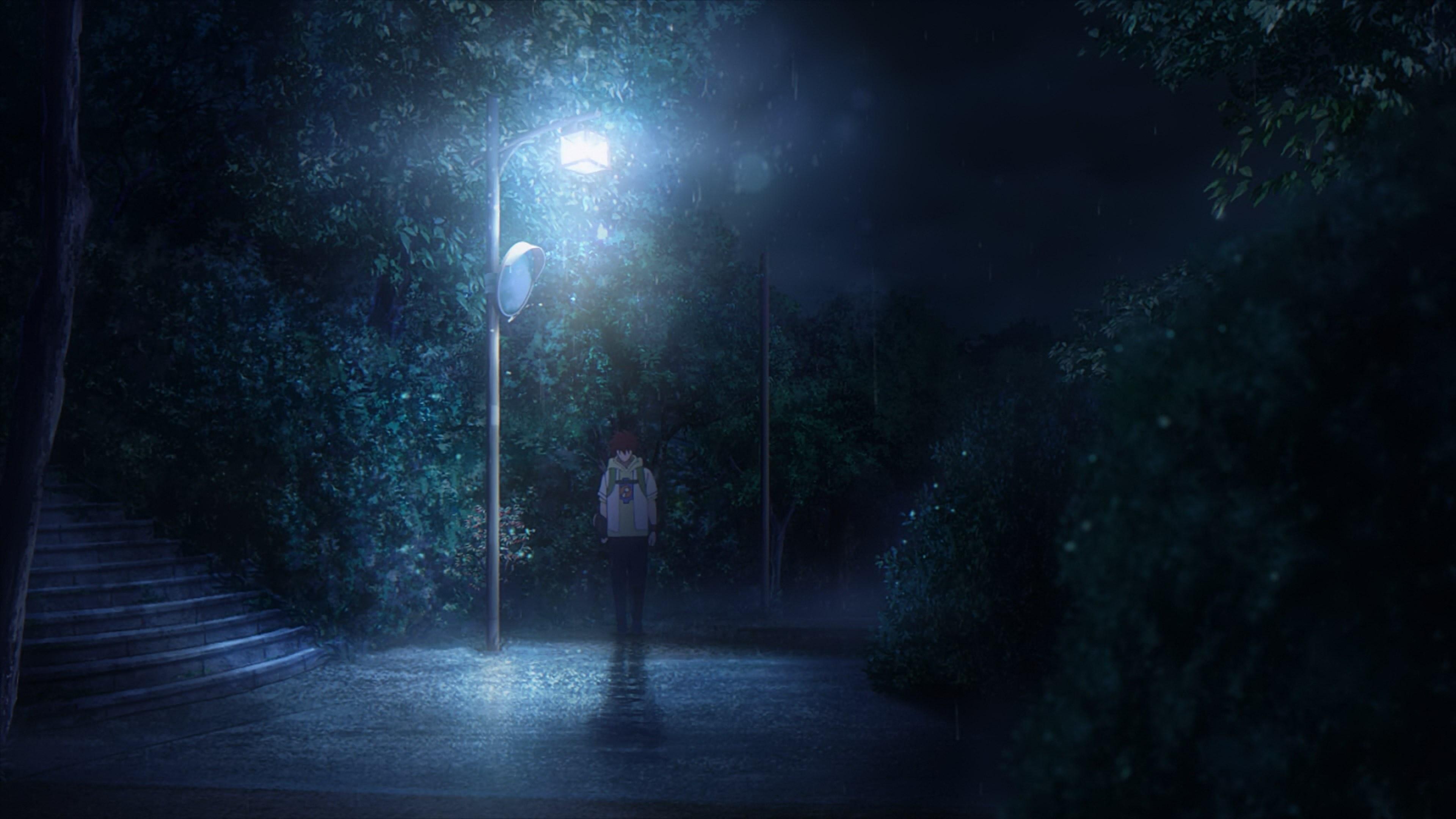
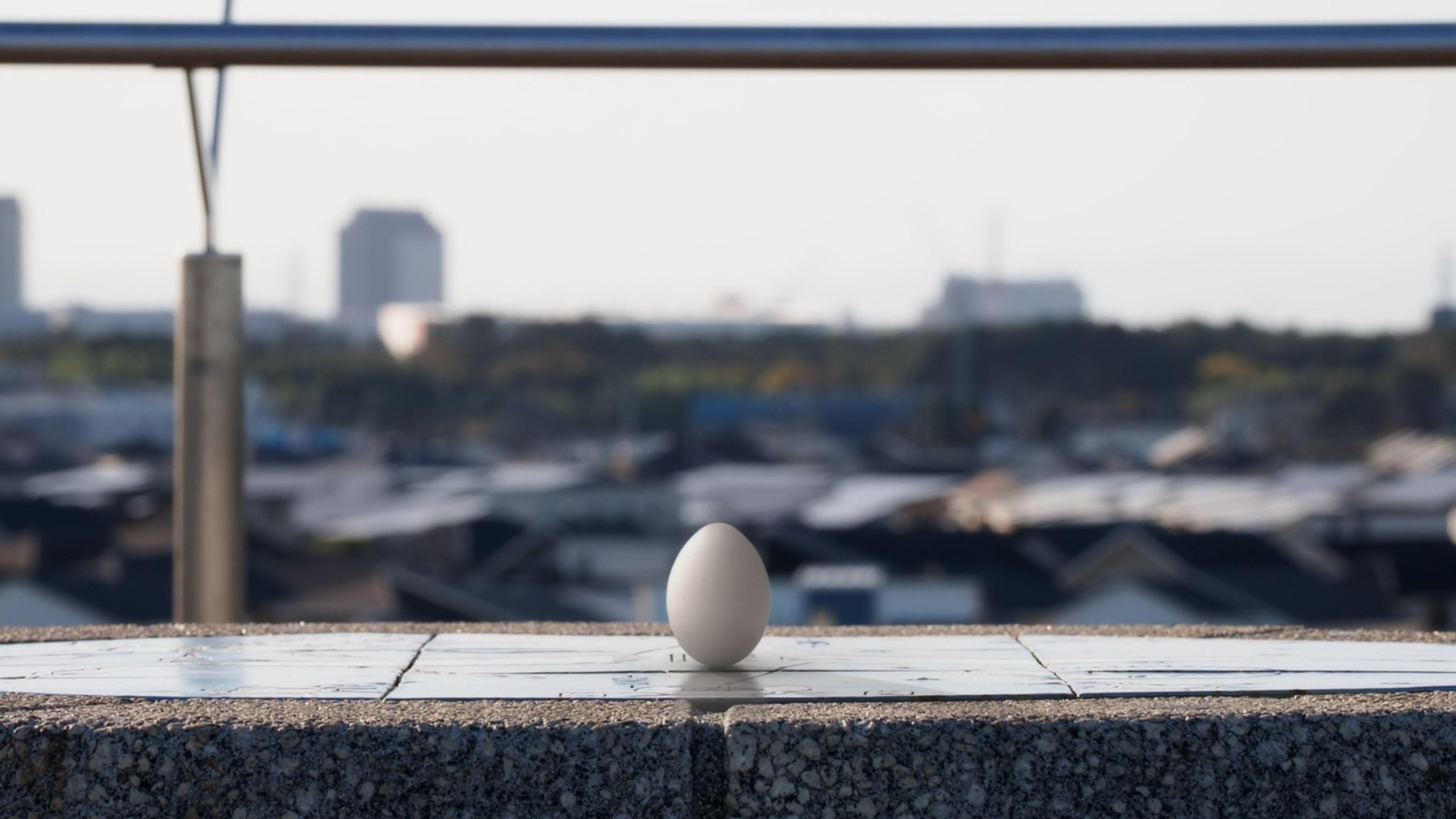
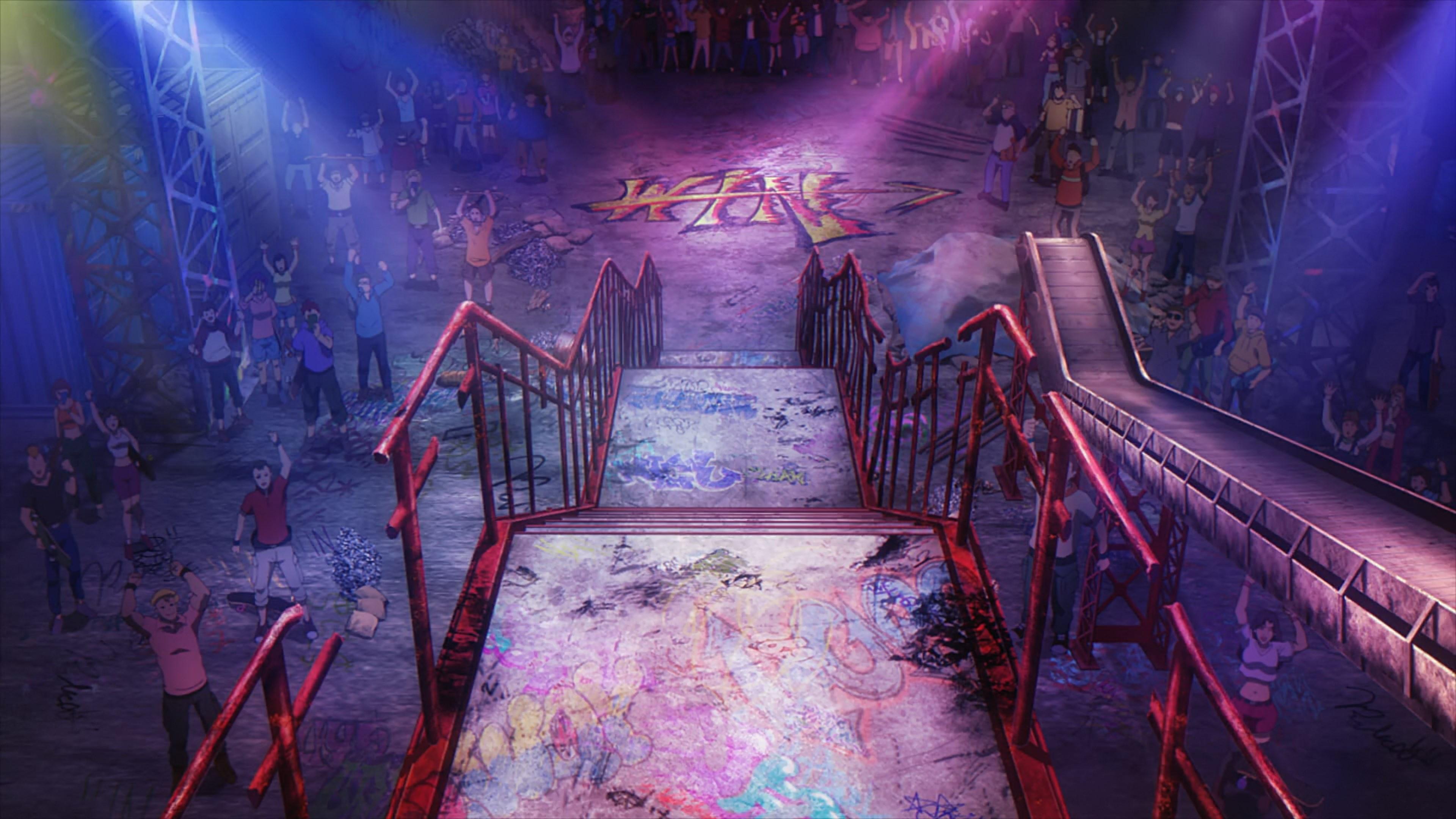

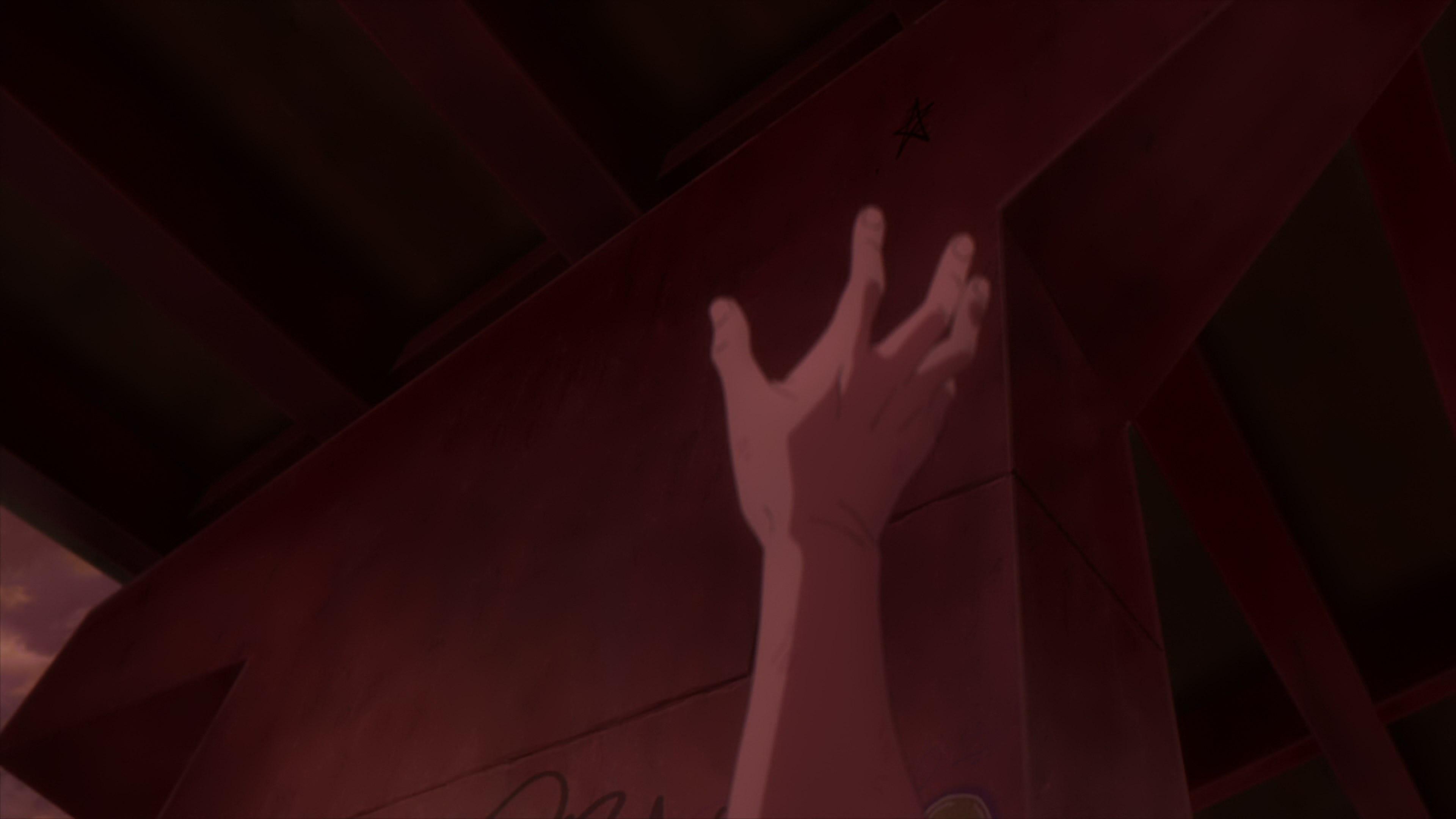
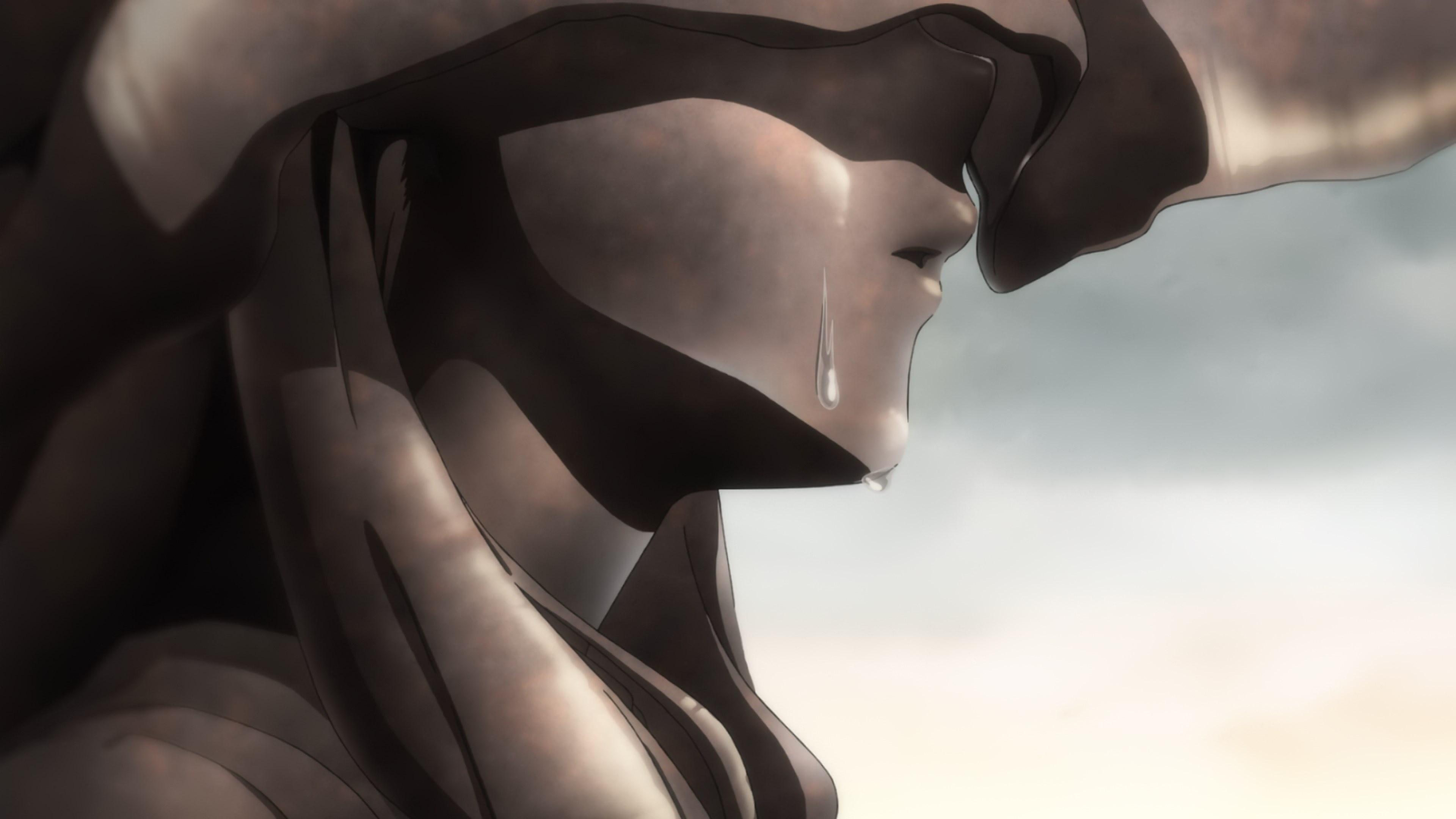
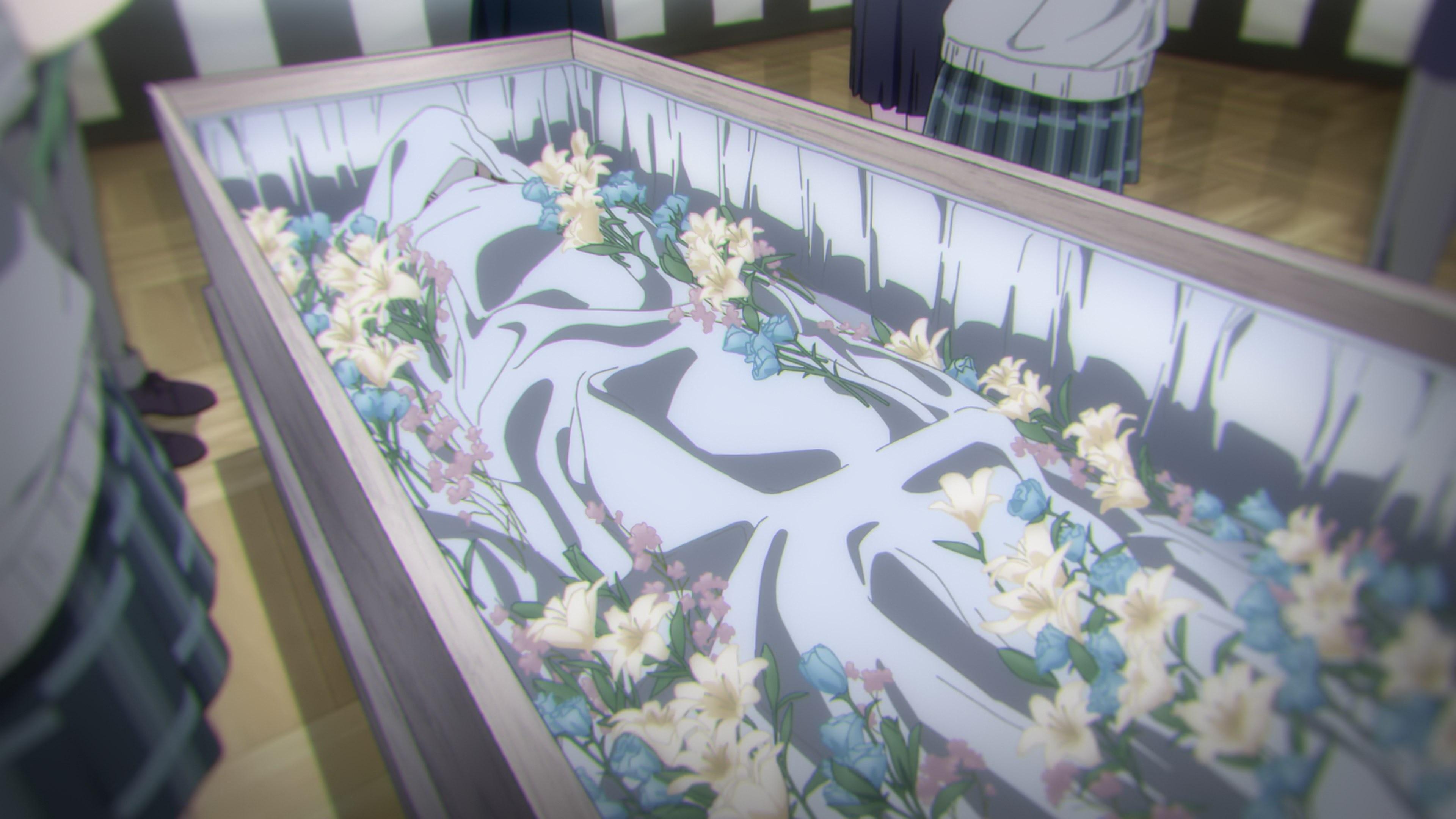
Effects of the pandemic aside, when and how did things start getting this bad? The mid 2000s were producing almost as much anime, with the standard TV production being two cours or more, and without as many ADs per episode. Are TV productions these days more ambitious than before? Are there less people working in the industry than there used to? Have the deadlines become shorter? It is very strange that what was once routine in the industry has become so difficult, and a production both healthy and ambitious is an increasingly rare sight.
All of the above. There is the ambition, or perhaps sheer amount of work with the increasing complexity of designs and demands to emulate whatever flashy new movie has become a hit recently. The attrition rates are awful, so a lot of capable people drop out fast because they’re not willing (or literally can’t) weather this nonsense. This also causes the remaining people to get promoted to high responsibility roles faster than ever, which sounds neat until you realize that they move up without the necessary training, leading to problems more often than not. All those problems and then some… Read more »
I remember you said once that the industry managed to reach a ‘comfortable’ rock bottom and does that hold true now or have things started to eat through the bedrock and get worse?
There should have been nothing below, and yet here we are. But really, for every development that makes things demonstrably worse, the industry manages to find a way to “compensate” for it – obviously not by actually improving the conditions, but by making this nonsense more feasible, like the way they’re exploiting young overseas talent nowadays. This is how anime makes its instability stable.
Thank you so much for this very enlightening article.
I’m curious about what the problems are with Titan. I’m new with understanding problematic production histories of the various studios, and my Japanese is beginner-level so I can’t follow what the industry’s saying about it online. The biggest problem I’m seeing is the current season supposedly has only a few episodes left, and yet there’s…a lot of chapters from the comic that remain to be adapted, and those chapters certainly won’t get any easier to adapt as an animation production. To be clear, I’m not saying “I see no problems, therefore there aren’t any”, I just don’t have insight and… Read more »
The problem with Titans is that, to put it plainly, it’s a pain in the ass to make. The “language” of its action is very complex, even more so after people like Imai developed it further in animation form. Its fans are also used to very detailed character art that remains consistent. WIT barely survived its production (hardly an exaggeration given the behind-the-scenes state during S1), and with them out of the picture, only a notoriously reckless studio like MAPPA was willing to accept tackling the challenge – especially given the tight deadlines that were on the table. Add to… Read more »
Thanks, and that’s a shame. I was one of those who thought the early episodes looked surprisingly good. It’s one of those things where I’m surprised I haven’t noticed things that look off or wrong – I don’t have the best-trained eyes to spot problem spots, but I can notice other things (like the eps. of season 2 with the still-frame corps members panning across the camera, the still-frame CG horses doing the same, the oddly-drawn horse raising its head, etc.) before reading your production notes.
Precisely I was talking about that with some friends, I am angry at Kodansha for a lot of things, in Attack on Titan’s case, for putting impossible deadlines for a show that needs god-mode to animate, and not reconsidering those deadlines even with a pandemic, and I’m also angry at MAPPA executives for taking the show with those conditions. But some people choose to lash out at the artists that have to deal with what the executives did, and other people choose to praise the corporation instead of the artists… Now what will happen once we get to episode 16?… Read more »
Honestly, I feel like the staff made a good enough work, much better than what happened with S3p2, where you could really tell how unpolished and rushed the work is ( and some scenes even lacked inbetweens lmao). I honestly am enjoying more Mappa version of AoT than WiT. I feel like there’ s more life in scenes, and despite the god awful schedule, the storyboarding and direction keeps being very strong, even if it results in some off-model animation. Even the weaker episodes like ep10 or 12, I still can tell that the work done there was good. WiT… Read more »
Hmm my main problem with this season is the colour palette it lacks polish
The first thing that struck me was the brief aside about the state of AoT, R:Z, and Neverland. Similar asides are in various other posts (like the Winter 2021 overview), but is never really explained in greater detail. I suspect to you and regulars of your Discord the situation is plain and obvious, but to what you call “untrained eyes”, AoT looks amazing every episode, R:Z seemingly has so much resources that it can dedicate 29 minutes to every episode, and… Neverland has some obvious pacing issues but that’s more on the script than production (or are they related?). This… Read more »
The negative effect of collapsing schedules on the quality of the work can manifest in a lot of ways that aren’t necessarily obvious to most people. Shirobako made a funny gag out of this with a legendary mess of an episode being drawn in a bizarrely loose way, which I liked at the moment, but selfishly I also wish it had underlined those symptoms better since there are a lot of people in a similar situation to yours. “Melting” really is a common concern, though rather than outright ugly messy drawings all over the place (which do happen despite anime… Read more »
“R:Z seemingly has so much resources that it can dedicate 29 minutes to every episode” Not really, there’s a definite quality to it that makes its production problems look pretty obvious: The characters are often simplified so they can get the episodes done on time, even when barely animation is needed on-screen, there are only like three inbetween teams at any given time (one of them being Korean studio DR Movie, aka the unsung hero of 2020 at this point considering their increased workload as of late. Including every episode of R:Z thus far), and the pacing itself seems to… Read more »
Things we know for a fact about Neverland: For quite a while and with the sequel already in development (Kanbe commenting at cons that he was very busy with it), its animation team was… not animating it. They showed up regularly in other projects, and even that lovely Ken Yamamoto x Eve music video happened as a consequence of that team having the time – the staff have said as much. What could leave a project like that stuck in pre-production, especially given that sequels tend to be smoother in that regard? That part takes some guessing, but the feeling… Read more »
Sorry to butt in, but I’m also curious about CloverWorks and their current situation. They have a new anime coming out Shadows House, but they haven’t even shown anything from that. Is that also having problems?
I’m also curious about their Fate Grand Order project. The latest Grand Order movie did really badly at box office as well as in fan reception. Is this going to affect their future projects like Solomon (Which I’m guessing is going to be a movie). Or do they not care considering the game prints money. Thanks! Great article!
They didn’t make the Fate Grand Order movie, Signal.MD did (another IG Port like Production IG and WIT), so that shouldn’t affect them. CloverWorks is a subsidiary of A-1 so they def have backing. I know they’ve been hiring younger animators but idk how related that is. It seemed like they’d been working on the three shows from this past season all at once over the pandemic and they all finished and released at the same time. WEP was an original project, and they made Horimiya since the manga was ending, but I have the feeling Promised Neverland got the… Read more »
This begs the question if any studios (or core group of creators, so as to speak) in the anime industry have managed to mostly avoid such problems for a long consistent period across multiple projects for years or even decades.
Is KyoAni as best as it can be when it come to TV broadcasting anime?
When it comes to environments, yes, they’re frankly incomparable to the rest – the closest cases being studios with similar models (in-house mentality, development of their own animation culture, dedication to training young staff, studio branches outside Tokyo) like Ufotable. You’ll obviously be able to find individual projects elsewhere that are as blessed if not more (for some of the people involved at least) but those are quite rare, so you’ve got to be lucky to land in one of them.
Thank you. I felt something subtly “off” in the presentation and pacing of the latest Episode 9, but I wasn’t sure if I was just being overly critical due to the high bar set by the series. I think the in-betweens were a bit less accurate so the “feel” of episodes was disconcerting at times — although this is just a random guess from an untrained eye. This article made me feel less like a crazy person and temper my expectations for the animation of the remaining episodes. I’m still hoping for the best for the show, but more importantly… Read more »
” This industry struggles a lot with efficiency, partly because of its reluctance to move away from nonsense practices that have become tradition, and partly because there’s simply no managing a metric ton of titles a year in a sensible way.” Having worked in an industry that struggled a LOT with efficiency, especially in Japan, I can related to this. Can you elaborate on specifics or link to any previous articles written about it? I’m assuming a lot of it is NOT going digital, especially for storyboards. I’m going to check out the latest Animage magazine since it’s got an… Read more »
There are constant problems with the pipeline, but I think that the actual issue at play is the inability to get people on the same page. Anime’s not so bad at adopting new tech for one, partly because younger artists are always likely to embrace it, and partly because anything that can cut costs is seen with good eyes. The problem starts when the implementation of that tech is half-hearted; for all the artists pushing for full digitalization, very very few studios have prepared pipelines built around that concept, and even when it comes to them they’re going to end… Read more »
Hi!!!! Thank you so much for the reply!! Wow, given that there are a lot of older animators still clinging to their pencils and paper, I was wondering if the struggle was tech related. Tech has certainly enabled the production of MORE shows but it’s definitely not everything. “Getting people on board” is definitely the most difficult and yet important part of a creative project. I am a veteran of another creative industry and this article on the what the best creative teams do is spot on: http://intelligenceengine.blogspot.com/2015/01/the-game-outcomes-project-part-5-what.html Looking at the list of “what great video game development teams do”… Read more »
“the truth is that some teams essentially specialize in materializing gold out of nowhere… and others couldn’t pull it off even with deadlines a decade away. ”
Do you think that was the case with OPM S1/S2? I mean you would think that after S1’s success the production committee would at least give the staff the same if not more time to make S2, but the popular belief is that S2 had worse schedule than S1 which I don’t think is really true.
S2 had an HORRIBLE SCHEDULE. The BD versions of OPM S2 are infinitely better than the TV version, but still, you can see all over the place the limits of that season. While there was a clear skilL gap ( OPM S1 had an assemble of freelancers animators that is NUTS), OPM S2 could have turned MUCH better if they gave actual time for the studio.
Seconding this. OPM S2 would have a very tough time matching the highs of the original show’s action even with an ample schedule because the pedigree and experience of that team was simply on another level, but they *did* have action specialists, both in-house and freelance talent. Had it been a reasonable project, the animation would have been much better realized, and I bet they’d have ironed out a bunch of problems with the aesthetic as a whole too.
So that means S2 really had worse schedule than S1, I wonder why, maybe because Bandai rushed the staff to put it out around the time they release the video game? Anyways thanks for the reply, both of you.
I doubt it, For me at least, it probably comes down to one of two things: – The staff, as already mentioned, were simply nowhere near as skilled as Season 1’s staff when it came to mindblowing fights. Any excellent fight that Season 2 could muster was already going to look mediocre in comparison to what Season 1 was giving people. – JC Staff themselves are not exactly known for high-octane, almost nonstop action shows like OPM, but more cerebral shows with bits of action here and there like the Index/Railgun franchise. And even then they tend to be fairly… Read more »
Very interesting and sadly depressing article. I’m curious since I can’t seem to find any info on this anywhere on the web but do you have an estimate on how much KA are located in Tokyo? I once heard that there were around 5000 people total working in the anime industry but I can’t really confirm that.
I’ll keep an eye for that specific data point in the future, but as you can imagine it’s really hard to track even for entities like Janica. As for the second one, it’s become essentially impossible to give a definitive answer due to the way that productions like WEP blur the lines completely. Its latest episode is to some degree fan-made, down to the organization and management of part of the workload.
So through seeing the credits of this week’s Wonder Egg Priority episode and scrolling through anitwitter, it’s clear that episode 10 relied heavily on outsourcing to overseas animators. What intrigued me though is that a lot of the animators that were brought on also happen to be passionate fans of WEP. Is this a remarkable thing? From what I’ve heard, anime is usually outsourced to cheap studios in China, Korea, etc. and not to fan animators that have been organized over the internet.
UGH this whole situation is so awful! between this and the fiasco of wep #10 my mind is very frequently looping “i want half the amount of anime to air per season, because studios are getting twice the amount of time to work on them, and staff is getting paid 10x as much, and I’M NOT KIDDING” in imitation of ye olde popular slogan protesting crunch culture in video games. like, thinking back on what happened with revue starlight makes me Very Afraid about “ambitious original project gets screwed by deadlines/unforeseen emergencies/staff biting off more than they could chew and… Read more »
Why does it have to be like this? What would it take to get to the point where projects are fully completed before they go to air? Would it even be possible for people to make money doing that as things are now?
So is it safe to say that the reason Attack on Titan season 4 didn’t fall apart like SK8 and WEP is because of the sheer competence of Yuichiro Hayashi?
S4 didn’ t fall apart ( and even then, kinda debatable, the first 9 episodes are well polished despite some shots, and after that, 10-16 are of varying quality, despite still pulling out a good product) only because Mappa outsourced a SHIT TON of basically everything to other studios. I wouldn’ t even be surprised if ep14 was partially animated by the Jujutsu team/ korean or chinese freelancers, because the style and direction of that fight looks completely different from the usual storyboards that Hayashi/ his storyboarders does in S4. Hayashi is a goat, but even then, we can see… Read more »